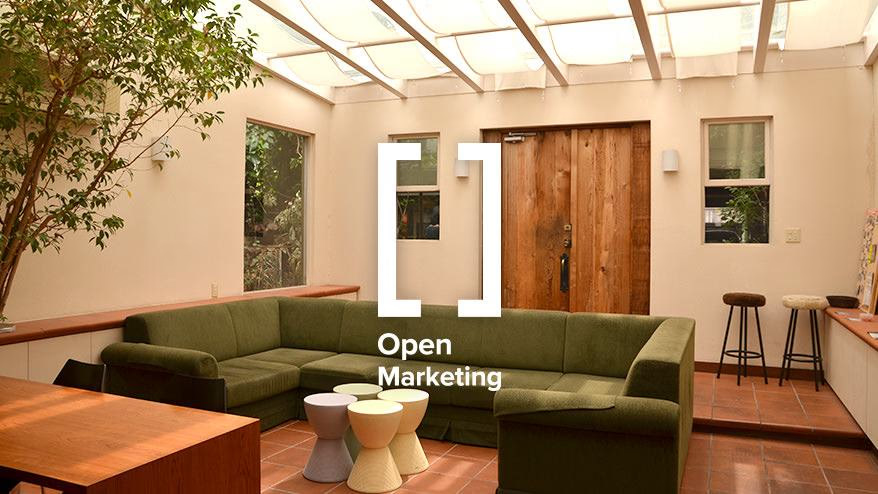みなさん、こんにちは。モノサス代表の林です。
前回から、固定客に共通する5つのポイントについてお話をしています。
- 自分の価値観、悩みにマッチした商品・サービスを利用している
- 商品・サービスのバリューを実感している
- 企業・店のことを理解し、語ることができる
- 高頻度にリピート行動を起こしている
- 企業のコミュニケーションルールを受け入れている
前回は 1. と 2. についてお伝えしましたが、
今回は残りの3つについてお話したいと思います。
企業・店のことを理解し、語ることができる
第7回でもお話ししましたが、はじめて商品・サービスを購入する顧客の多くは、
あなたの会社の顧客になりたくて、商品・サービスを買うのではありません。
したがって、商品については調べますが、会社や店のことまできちんと調べ、
納得してから購入するような人は稀です。
マーケティングでよく用いられる言葉のひとつに Preference(プリファレンス)
というものがあります。
この言葉は、日本語に訳すのが難しいマーケティング用語のひとつですが、
一般的には「好意度」と訳されます。
たとえば、コンビニのビール売り場に行ってずらっと並んでいるビールの中から、
あなたがどのビールを選ぶのかというのは、マーケティング的には
この Preference によって決定されているという解釈をします。
Preference が便利な点は、銘柄Aを選ぶ確率が60%、銘柄Bを選ぶ確率が25%、
銘柄Cを選ぶ確率が10%、それ以外の銘柄を選ぶ確率が5%といったように
確率論で表すことができる点です。(ただし調査を詳細に実施する必要があり、
実際に活用しているのは大企業中心です)
一般的にはマーケティング活動の中で重要なのは
この Preference をいかに向上させるかだとも言われています。
しかし、この Prefernce を構成しているものは非常に
あやふやなものです。
あなた自身がコンビニのビール売場で、銘柄を決める要因はなんでしょうか。
薬局に行ったときにシャンプーのブランドを決める要因は...。
こうやってひとつひとつあてはめて行くと、購買意思を決定しているのは
多くの場合「なんとなく好き」という感覚です。
これが数多くのマーケッターを悩ましている根源なのですが、
商品・サービスの購買理由を、購買した消費者自身があまり理解していないのです。
もちろん、その時、その瞬間は明確な理由があるかもしれません。
しかし、状況が変われば、その決断は簡単に翻ってしまいます。
私はこの問題について、Preference には二種類あるという言い方をして
対応しています。
そのふたつとは「暗黙知的 Preference 」と「形式知的 Preference 」です。
顧客自身が「なぜ自分がこの商品・サービスを選択するのか」をはっきりと
認識している場合は「形式知的 Preference 」であり、その逆に
なんとなく選択している場合は「暗黙知的 Preference 」と呼ぶことにしています。
「なぜ自分がこの商品・サービスを選択するのか」を認識しているとは、
他人に対してその選択の根拠を説明できることを意味します。
自分自身が明確に認識しているということは、自他を問わず聞かれたときに
言語化して説明できるということだからです。
これまで私たちは固定化している顧客の多くに直接話を聞いてきましたが、
そのほとんどの方々がその理由をしっかりと語ることができました。
これには実は原因が。
固定客の多くが、周囲のひとびとに対して自分が固定客であることと、その理由を
すでに何度か語ったことがありますが、
何度か口に出して語っていくうちに、自分の中で言語化され、
自分自身がなぜその商品・サービスを選択するのかの理由が
形式知化されていくからです。
いずれにしても、固定客に共通する3つめの特徴は、
商品・サービスを感覚的に好きなだけでなく、その理由を明確に
自分の中で認識し、語ることができることです。
高頻度にリピート行動を起こしている
この特徴については第8回で詳しく述べましたが、
そもそも固定客とは高頻度にリピート行動を起こしている顧客のことを指しますので、
そのことについてはもはや説明は不要だと思います。
しかし、この特徴の中で特に重要なのは、
高頻度にリピート行動を起こす顧客の多くが、
初回取引から間を空けずにリピート行動を開始している点です。
もちろん多くの例外はありますが、
初回取引から2回目の取引の時間が空けばあくほど、
高頻度のリピート行動をとり、固定客になってもらうことは難しくなります。
また、商売の世界では「3回安定、10回固定」などと言います。
3回のリピートで安定客、10回以上のリピートで固定客になるということです。
これは非常にわかりやすく、商売の世界で育まれてきたことわざのようなものですが、
私は、さらにこれに「1ヶ月3回安定、1年10回固定」というように
時間軸を加えたほうがよいと思っています。
少し語呂が悪くなってしまいますが、リピート行動と時間軸の関係性は
非常に緊密に連携しあっているため、強く意識する必要があるのです。
実際には商品・サービスにの特性よっては、1年の間に10回もの購買行動を
とることは不可能なものもありますが、
重要なのは、人は忘れる生き物であるということです。
人間は学習をしても、1日後にはその74%の内容を忘れてしまうと言われていますが、
購買行動についても同じことが言えます。
なぜなら、初回購買時に商品・サービスのことを調べるのは、
学習とかなり似通った行動であるからです。
つまり、企業がどれだけ頑張って商品・サービスについて、
そして自分たちの考えや価値観について説明をしても、1日経てばそのほとんどが
忘れ去られてしまうのです。
しかし、これを防ぐ方法があります。
それは、復習させることです。
そこでさきほどの
「1ヶ月3回安定、1年10回固定」
が重要なのです。
また、この中で私が特に重要だと考えているのが
「1ヶ月3回」の部分です。
初回取引後から1ヶ月の間に3回以上のリピート行動をとってもらうことができれば
顧客の中で、購買行動が習慣化され、定着し、固定客化しやすくなっていくのです。
1ヶ月の間に3回のリピート行動というとハードルが高そうですが、
ここで「リピート行動」という言葉を用いているように
必ずしも「リピート購買」である必要はありません。
このあたりは、またのちほど解説したいと思いますが、
固定客に共通する4つめの行動は、
高頻度なリピート行動が、初回購買から間を空けずに開始されていることです。
企業のコミュニケーションルールを受け入れている
顧客が固定客化していく中で、当然ながらある程度の
コミュニケーションが企業と顧客の間に発生します。
もちろん、ほとんどの場合、語りかけるのは企業側なのですが、
当然ながら固定客であればあるほど、企業からの語りかけやアクションに
耳を傾け、反応する度合いは高くなります。
また、顧客側からの行動やアクションを待っているだけでは
高頻度のリピート行動を起こすことは困難です。
なぜならほとんどの場合、顧客は1年に10回以上の
リピート行動を起こすことを想定していないからです。
企業側からリピート行動について働きかけをしない限り
顧客のリピート行動回数は十分な数にならないのです。
この時に重要なのは、企業からの語りかけやアクション、
すなわちアプローチが、顧客に到達することです。
実は、固定客化に取り組むマーケッターの悩みの半分以上は、
顧客へのアプローチが到達しないことではないでしょうか。
送付したDMが開封されない。メルマガを読んでもらえない。
電話しても出てもらえない。ブログを更新しても見てもらえない...。
企業がありとあらゆる手段を使って次々に繰り出すアプローチの矢を、
顧客は避けるどころか、ほとんどの場合気づくことすらないのが実情です。
さきほども述べたように、固定客にはこの企業からのアプローチが
到達するわけですが、これは
「顧客が、企業のことが好きだからアプローチを受け入れている」
という単純な話ではありません。
どんなにその企業のことが好きでも、時間のない顧客は DM は開封しませんし、
電話が鳴っても、とることはありません。
固定客と企業の間にあるのは、好意度だけではなく、
コミュニケーションルールなのです。
さらに興味深かったのは、どの媒体を使えばよいというのは
一般的には言えないことです。
つまり、とある企業はメールを活用し、別の企業はDMを多用し、
また別の企業はほとんどを電話でやりとりしているといったように
企業ごとに有効な媒体は異なっているのです。
ただ、コミュニケーションルールが成立していることが重要なのです。
たとえば、電話を活用する場合、
企業が「電話で連絡しますからね」ということを、
顧客が「この会社からは電話で連絡がくるんだ」ということを理解し、
受け入れているということです。
つまり、電話で連絡することが可能な状態にあるということです。
DM であれば、顧客が「DMを開封する」というルールを
守る状態にあるということです。
もしくは DM と電話を組み合わせて活用する企業もあるでしょう。
当たり前のように感じるかもしれませんが、
固定客化において、顧客に対してアプローチが可能な状態になっているということは
施策実施における生命線であり、インフラのようなものです。
そして、この当たり前のことを実現できていない企業がほとんどです。
実際、「リストの件数ではなく、確実に連絡をとることができる顧客の数を教えてください」
と言って、その件数を正しくカウントできる企業はほとんど存在しません。
ほとんどの企業は、既存顧客に向けてコミュニケーションをとっていると言っても、
一方的に語りかけているにすぎないのです。
相手のほとんどは気づきすらしていないのにも関わらず...。
固定客に共通している特徴の5つめは
企業のコミュニケーションルールを受け入れ、
企業からアプローチ可能な状態にあることです。
次回以降の具体的な施策の構築の解説の際にさらに詳しくお伝えしますが、
このコミュニケーションルールも、初回購買の前後に構築されることが非常に重要です。
前回から2回にわたって固定客に共通する5つの特徴をお伝えしました。
次回からはこれらの特徴を踏まえた具体策の立案の仕方について
お伝えしていきたいと思います。
今月も最後までお読みいただきありがとうございました。
また来月お会いしましょう。

